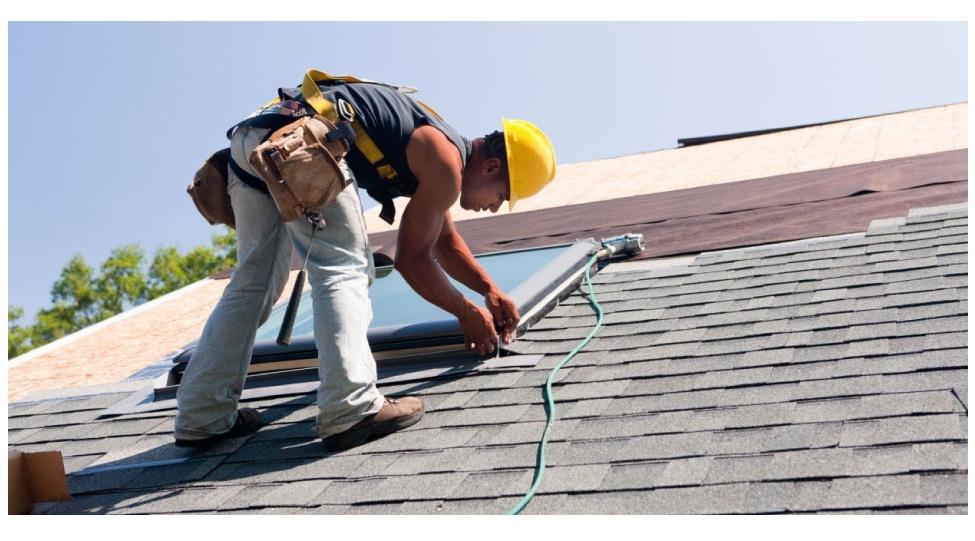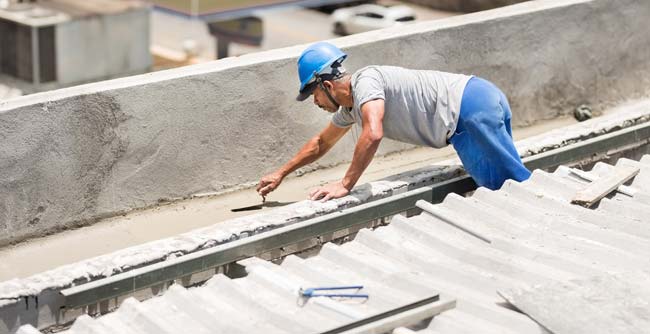Just How to Review Different Roofing Choices for Your Building Needs
Reviewing roof covering alternatives for your building requires a detailed technique that considers various variables such as the meant use the framework, regional environment problems, and material features. It is necessary to weigh the benefits and disadvantages of different roofing kinds, from asphalt tiles to metal and clay ceramic tiles, while additionally factoring in first expenses and long-term maintenance. Additionally, recognizing energy performance and aesthetic appeal can influence your choice. As you consider these factors to consider, one inquiry continues to be: which factors will ultimately direct your selection for a lasting and aesthetically pleasing roof covering solution?
Examining Your Building's Requirements
To efficiently evaluate roof options, begin by completely examining your building's demands. Start by taking into consideration the structure's intended usage, as various frameworks may require varying roof requirements. Residential roofings typically prioritize aesthetics and insulation, while business structures might focus on sturdiness and load-bearing capability.
Next, assess the neighborhood climate problems that will certainly affect roofing performance. Factors such as temperature fluctuations, precipitation degrees, and wind patterns can affect product choice and style. A roof covering system that stands out in a warm climate might not perform too in areas susceptible to hefty snowfall or severe warm.
In addition, assess the architectural stability of your structure. Ensure that the existing structure can support the selected roof covering materials, especially if taking into consideration much heavier alternatives. It is additionally crucial to evaluate any kind of local building ordinance or guidelines that may determine details requirements for roof systems.

Contrasting Roof Covering Products
Once a comprehensive analysis of your building's needs has been completed, the following step entails contrasting numerous roof products. Each product provides distinct benefits and disadvantages, making it important to align your selection with your specific requirements and situations.
Asphalt shingles are extensively acknowledged for their cost and ease of installation, making them a prominent choice for residential buildings. On the various other hand, metal roof covering, understood for its longevity and long life, can stand up to rough climate condition yet may include a greater first investment.
Clay and concrete ceramic tiles give excellent thermal insulation and aesthetic allure, particularly for Mediterranean-style design, yet they require an even more durable structural assistance as a result of their weight. Wood drinks offer a natural look and excellent insulation buildings yet may require much more upkeep and are vulnerable to fire risks.
Evaluating Cost and Budget
Evaluating your roofing options necessitates a mindful assessment of price and budget plan considerations. The overall budget plan for a roof task makes up a number of factors, including product expenses, labor costs, maintenance, and potential lasting cost savings. It is crucial to develop a clear budget before checking out certain roofing products, as this will guide the decision-making process and aid you prevent overspending.
Begin by obtaining more helpful hints quotes from several specialists to understand labor costs in your region. Ensure that these estimates consist of all necessary solutions, such as elimination of the old roof covering, setup, and any added features, like insulation or air flow renovations - Roofing Contractor. Next off, assess the price of numerous roof covering materials, thinking about both first installation expenses and expected life-span

Recognizing Power Effectiveness
Energy effectiveness plays a critical function in the choice of roof covering products and systems, significantly impacting both energy intake and general comfort within a building. A well-chosen roof can improve thermal efficiency, decreasing the requirement for home heating and cooling systems, which in turn lowers energy expenses and minimizes environmental impact.
When assessing roof covering choices, think about materials that show instead of absorb heat. Light or reflective roofing items can substantially decrease roof surface area temperatures, leading to lower power usage throughout hot months. In addition, correct insulation and air flow are vital to optimize the energy efficiency of the whole roofing system. Insulation avoids warm transfer, while ventilation minimizes heat build-up in the attic room room.
An additional vital element is the roofing system's durability and upkeep demands. Long lasting products view publisher site that call for much less constant substitute contribute to lasting energy savings. Moreover, the energy performance of a roof can additionally be assessed via its conformity with well established sustainability rankings such as power CELEBRITY or LEED.
Taking Into Consideration Visual Charm
A roofing system's visual allure dramatically influences the overall appearance of a structure, enhancing its building design and boosting visual charm. Roofer. When assessing roofing options, it is important to consider exactly how the picked why not find out more material, shade, and design will balance with the existing framework and community. A well-designed roof covering can boost also the easiest of buildings, changing them right into aesthetic centerpieces
Various roof products provide different aesthetic high qualities. Conventional shingles may stimulate a classic appeal, while metal roof covering can give a modern-day, sleek appearance. In addition, the shade of the roof product plays an essential function; lighter tones can make a structure show up even more large, while darker tones might create a cozier ambiance.
Furthermore, building components, such as dormers and eaves, can improve the roof's visual effect. It is a good idea to speak with specialist developers or designers to make certain the selected roofing alternative aligns with the general design intent. Ultimately, a roof covering ought to not just give functional advantages however also contribute favorably to the building's aesthetic, mirroring the owner's preference and the personality of the surrounding setting.
Final thought
